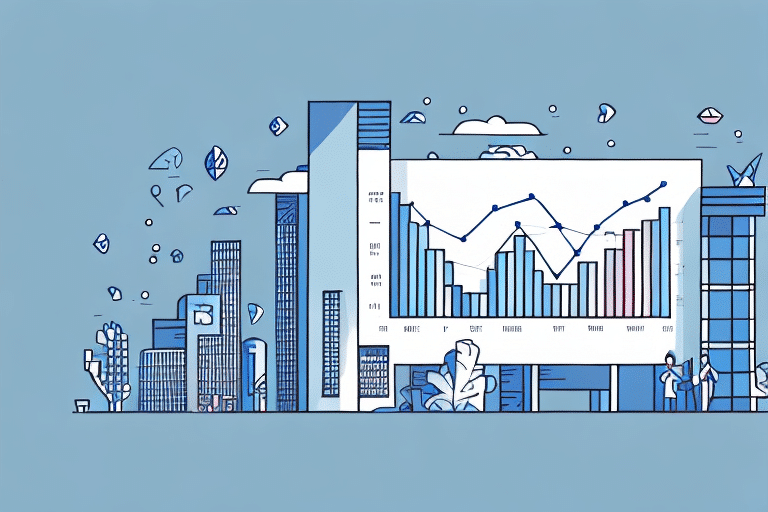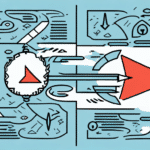The Importance of Customer Retention for Business Success
As businesses strive for growth and profitability, customer acquisition often takes center stage. However, focusing solely on acquiring new customers can be an expensive and uncertain strategy. In fact, studies have demonstrated that retaining existing customers is significantly more cost-effective than acquiring new ones. Therefore, customer retention should be a fundamental aspect of any successful business strategy.
Why Customer Retention is More Cost-Effective Than Acquisition
Acquiring new customers typically entails substantial costs, including marketing expenses and resource allocation. In contrast, retaining existing customers generally requires fewer resources, as businesses do not need to invest as heavily in convincing them to make repeat purchases. Moreover, loyal customers tend to be more profitable over time, often spending more and referring others to the business. According to a study by Bain & Company, increasing customer retention rates by just 5% can boost profits by up to 95%.
One key reason for the cost-effectiveness of customer retention is that existing customers are already familiar with your brand and offerings. They have experienced the quality of your products or services and have established a level of trust with your business, making them more likely to make repeat purchases and less likely to switch to competitors.
Additionally, customer retention enables businesses to gather valuable feedback. Maintaining relationships with existing customers allows companies to gain insights into their needs and preferences, which can be leveraged to enhance products and services. This feedback can also inform targeted marketing campaigns that resonate more effectively with existing customers, further increasing the likelihood of repeat purchases.
The Impact of Customer Retention on Business Revenue
Enhancing customer retention rates leads to multiple benefits, ranging from increased revenue to more consistent cash flow. Loyal customers are prone to make repeat purchases and often spend more per transaction. They are also likely to refer others, providing a source of new customers without the additional costs associated with acquisition. Conversely, losing customers can significantly impact revenue, as businesses must exert extra effort and resources to replace lost customers.
One effective method to improve customer retention is by providing exceptional customer service. When customers feel valued and appreciated, they are more inclined to continue doing business with a company. This includes promptly addressing customer inquiries and complaints, offering personalized recommendations, and providing incentives for repeat business.
The quality of products or services also plays a critical role in customer retention. Consistently satisfying customers ensures their loyalty. Therefore, investing in product development and quality control measures is essential to provide the best possible customer experience.
Strategies for Improving Customer Retention Rates
There are numerous strategies businesses can implement to enhance customer retention rates. A primary approach involves understanding your customers' needs and expectations. By gathering feedback and analyzing customer behavior, businesses can identify pain points and create a more personalized experience.
- Build Strong Relationships: Foster loyalty and trust by maintaining consistent communication and delivering on promises.
- Offer Incentives and Rewards: Implement loyalty programs, discounts, or exclusive offers to encourage repeat business.
- Provide Exceptional Customer Service: Ensure prompt responses to inquiries and effective resolution of issues.
Understanding Your Customer's Needs and Expectations
A critical step in enhancing customer retention is comprehending your customers' needs and expectations. This involves identifying customer pain points, gathering feedback, and creating a personalized experience. Addressing customer concerns and tailoring experiences can strengthen the connection with customers, making them more likely to return.
One effective method for gathering feedback is through customer surveys. Surveys can provide insights into customer satisfaction levels, areas for improvement, and overall experience. It's essential to keep surveys concise and offer incentives to encourage participation. Regularly collecting feedback and implementing changes based on that feedback can significantly enhance the customer experience and loyalty.
Building Strong Relationships with Your Customers
Establishing robust relationships with customers is vital for improving retention rates. This entails providing exceptional customer service, responding promptly to customer needs and concerns, and exceeding expectations. A positive customer experience fosters loyalty and encourages repeat business.
Personalizing customer experiences is an effective strategy to build strong relationships. This can include addressing customers by name, remembering their preferences, and offering tailored recommendations based on past purchases. Making customers feel valued and understood enhances their connection with the business, increasing the likelihood of repeat business.
The Role of Personalization in Customer Retention
Personalization plays a significant role in customer retention. By tailoring experiences to individual preferences and needs, businesses can create more meaningful and memorable interactions. This can involve personalized emails, offers, and custom recommendations based on previous purchases.
Utilizing customer data for personalization is crucial. By collecting and analyzing data on customer behavior and preferences, businesses can gain insights into what each customer wants and needs. This data can then be used to create personalized experiences tailored to individual interests.
Personalization not only enhances customer satisfaction but also increases loyalty. When customers feel that a business understands their needs and preferences, they are more likely to feel valued, leading to increased satisfaction and loyalty, as well as positive word-of-mouth referrals.
Leveraging Technology to Enhance Customer Retention Efforts
Technology can significantly bolster customer retention efforts. By employing data analytics and customer relationship management (CRM) tools, businesses can gain insights into customer behavior and develop more effective retention strategies. This encompasses tracking customer interactions and automating personalized communications.
One way technology enhances retention is by providing a seamless and personalized customer experience. For instance, businesses can use chatbots or virtual assistants to offer immediate assistance, or utilize predictive analytics to anticipate customer needs and provide personalized recommendations. A personalized experience increases customer satisfaction and loyalty.
Furthermore, technology allows for real-time feedback and insights collection. Tools such as online surveys and social media monitoring enable businesses to swiftly identify areas for improvement and adjust retention strategies accordingly. This capability helps businesses stay competitive and continuously enhance their retention efforts.
Creating a Loyalty Program to Encourage Repeat Business
Developing a loyalty program is an effective strategy to stimulate repeat business and foster customer retention. By offering rewards, discounts, and other incentives for repeat purchases, businesses can create a more engaging and rewarding experience for customers, thereby building loyalty.
When designing a loyalty program, it's important to consider what rewards and incentives are most appealing to your target audience. For example, if your business caters to families, offering discounts on future purchases or free items after a certain number of visits may be more effective than exclusive access to events. Additionally, clearly communicating the benefits of the loyalty program and making it easy for customers to participate and track their progress is crucial.
Measuring and Analyzing Your Customer Retention Metrics
Measuring and analyzing customer retention metrics is essential for identifying areas of improvement. Key metrics include customer churn rate, customer lifetime value, and retention rates over time. By monitoring these metrics, businesses can pinpoint issues and develop more effective retention strategies.
Addressing Common Reasons for Customer Churn
To improve retention rates, businesses must address common causes of customer churn. This includes tackling product or service quality issues and enhancing customer service and support. By identifying and mitigating these issues, businesses can enhance customer loyalty and reduce churn.
How Positive Customer Experiences Drive Retention
Positive customer experiences are fundamental to driving retention rates. By providing exceptional customer service and support, businesses can forge a positive emotional connection with customers, increasing the likelihood of their return. This involves effectively handling customer complaints and issues, as well as offering personalized support and guidance.
Training Employees to Prioritize Customer Retention
Training employees to prioritize customer retention is crucial. This involves ongoing training and support to ensure that employees understand the importance of customer retention and possess the skills to prioritize it. By fostering a culture that values retention, businesses can ensure that it remains a top priority and that all employees work collaboratively towards this goal.
Communicating Effectively with Customers to Foster Loyalty
Effective communication is key to fostering customer loyalty. By maintaining regular contact with customers and providing personalized communications, businesses can strengthen the connection and keep customers engaged over time. This can include email campaigns, social media updates, in-store promotions, and loyalty program rewards.
The Connection Between Brand Reputation and Customer Retention
There is a strong connection between brand reputation and customer retention. A positive brand reputation fosters customer loyalty and encourages repeat business, while a negative reputation can lead to high customer churn rates. By focusing on building a strong brand reputation and maintaining high levels of customer satisfaction, businesses can sustain high retention rates and ensure that customers continue to choose their business over competitors.
Conclusion
Customer retention is a vital component of any successful business strategy. By concentrating on creating a positive customer experience, building robust relationships, and leveraging technology, businesses can enhance retention rates and reap numerous benefits, including increased revenue, reduced costs, and higher customer loyalty. By prioritizing retention and continuously striving for improvement, businesses can establish a sustainable and profitable operation that ensures long-term success.




















